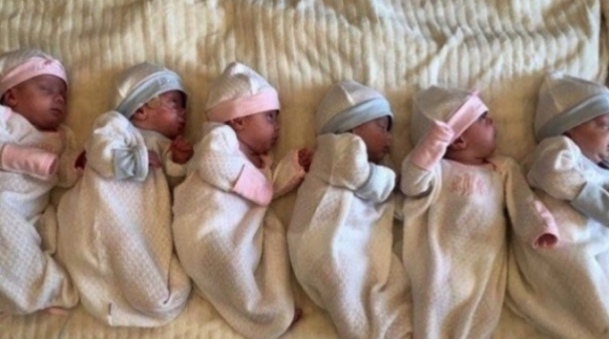Special Names for Multiple Births.
3 min read
From Twins (2 Babies) to Nonuplets (9 Babies)
By Robin Elise Weiss, PhD, MPH
Even though multiple births are rare, the public fascination with them persists. Thanks to reality TV, we’ve heard of quintuplets (five babies at once), sextuplets (six babies at once), and other higher-order multiples.
In 2021, a Malian parent gave birth to nine babies (nonuplets). This birth set a new world record for the highest number of babies born at one time to survive. The previous record was held by held by a U.S. parent who gave birth to eight babies.1
The nonuplets—five girls and four boys—were born in Morocco. Due to the risks associated with multiple births, the babies have remained in the clinic—along with their parents and older sibling—since birth. This way, their development and care can be monitored.1
A Simple Chart of Multiple Birth Terms
This quick reference can help you know what to call sets of multiples.
Number of Babies Term Used
1 Singleton
2 Twins
3 Triplets
4 Quadruplets (quads)
5 Quintuplets (quints)
6 Sextuplets
7 Septuplets
8 Octuplets
9 Nonuplets
The prefixes for the numbers four through nine come from the Latin words for those numbers. “Single,” “twin,” and “triplet” come from Middle English.
Twin Statistics
According to the United States National Vital Statistics Report, there are approximately 33.4 sets of twins born for every 1,000 live births and 101.4 sets of triplets or more per 100,000 births.2
In other words, twins are a lot more common (they account for about 3% of all live births) than triplets or other so-called “super twins” (which account for about 0.1% of all live births).3
Trends in High-Order Multiple Births
The rate of twin, triplet, and high-order births began to climb in the 1980s, especially among non-Hispanic white women age 25 and over, because of the use of fertility drugs and assisted reproduction techniques. While the rate of twin births increased by over 50%, the rate of triplet and higher-order multiples increased by over 400%.4
The rate peaked for triplets and higher multiples from 1998 to 2004 and has since been dropping, again in the same demographic group associated with the rise. This is due to a change in assisted reproduction treatments, especially the transfer of fewer embryos. The rates are still three times what they were in the early 1980s.4
Increasing rates of multiple births is a concern because the risks of mortality and long-term morbidity continue to be far higher for triplets and higher-order multiples than for singletons.3
Multiple Birth Variations
Multiple births can occur naturally, surprising many parents-to-be, especially if they don’t run in their family. They may also be a predicted possible outcome of efforts made to get pregnant.5
Identical
Every month, a woman releases an egg from her ovary (ovulation), which can then be fertilized by a sperm to form an embryo and, eventually, a developing fetus.
If one embryo happens to split into two or more embryos, identical twins (or more) may result. Due to the splitting of the embryo, identical twins share the same DNA. This is why they are always the same sex.6
Fraternal
On the other hand, some women release more than one egg during ovulation; they “hyperovulate,” so to speak. Experts are not quite sure why some women hyperovulate and others do not, but there is believed to be a genetic component to it. In addition, age plays a role, as women older than 35 are more likely to release more than one egg during each menstrual cycle.3
If a woman releases two or more eggs during ovulation, each may be fertilized by a different sperm, forming unique embryos. In this case, twins would be fraternal, not identical; they can be of different sexes or the same sex. Similarly, two (or more) embryos may be formed through assisted reproduction techniques and then transferred to the uterus.5
Interestingly, sometimes a combination of the above processes occur. For example, a woman could hyperovulate, releasing multiple eggs during the middle of her menstrual cycle. These eggs are each fertilized by a sperm, and then one or more of these embryo splits. In this instance, a woman could have multiple births (such as quadruplets) with two of the babies being fraternal twins and two being identical.
Nite: This report is not from Umuaka Times.







